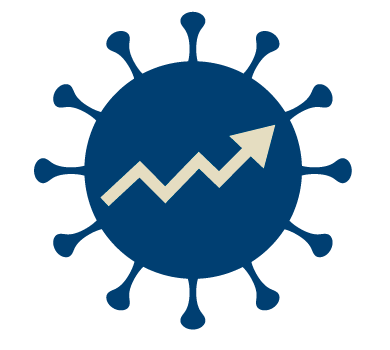Complex Relationships
The relationships between birds and mammals, between wild and domestic animals, are complex. H5N1 is traversing many of them. With the introduction of H5N1 clade 2.3.4.4b the host range has extended dramatically. While waterfowl serves as reservoir, migrating birds are spreading the virus all over the world. From millions of wild birds the virus spreads to wild mammals, but also domestic mammals and domestic birds. Sometimes the virus traverses several species, sometimes the virus is transmitted back to wild birds.
It is unclear what the final host species infecting "patient zero" would look like. It could be a pig acting as an influenza virus mixing vessel. Or a cat living in the same household. It could be a mouse contaminating the food. The relevant mutations could develop in "patient zero" by chance after one of the more common infections by chickens.
Some risks are obvious, for example mink farms. But the risk emanating from millions of infected birds and the transmission back and forth between birds and mammals in the wild is difficult to evaluate. As long as the virus spreads in birds around the world, the spillover events into mammals won't stop. And the risk rises with each opportunity for the virus to adapt to mammals.
The number of dead animals is already catastrophic and some species may become extinct. However, H5N1 is far from running out of animals to infect. With Australia there is still an entire continent left to infect. It's a numbers game and we may become overwhelmed by the sheer number of infections.
Wild Animals
While millions of wild animals worldwide succumb to H5N1, all that can be done at a larger scale is to remove infected carcasses to slow down the worldwide spread. What happens in the vast wilderness often stays undetected and may surprise us one day.
>> Wild Animals
Domestic Animals
Keeping domestic animals is a deliberate choice, a man-made risk. Especially the large quantities of animals in factory farming in crammed living conditions are a clear pandemic risk, despite dissenting opinions. This risk is negligently exacerbated due to short-term financial interests, even vaccinations are controversial. More than 100 million chickens have already been culled to curb the spread of H5N1. This is however only a small fraction of the poultry kept by humans. In terms of biomass there is far more livestock than wild mammals and far more poultry than wild birds.
>> Domestic Animals
Contamination and Transmission
There are several ways how influenza spreads, is transmitted, and contaminates the environment. Most intuitive is the respiratory-aerosol route, where exhaled particles are inhaled and infect the airways. The ingestion of infected animals is another way to get infected. A third option is the fecal-oral route. More generalized influenza can be transmitted by fomites, contaminated inanimate objects. While the actual impact is being researched, H5N1 has a tendency to contaminate and persist. Bird feces contaminate the habitats of seals and sea lions at the coastline, but also bodies of freshwater. Recently bird flu has found a new vector in raw cow milk.
